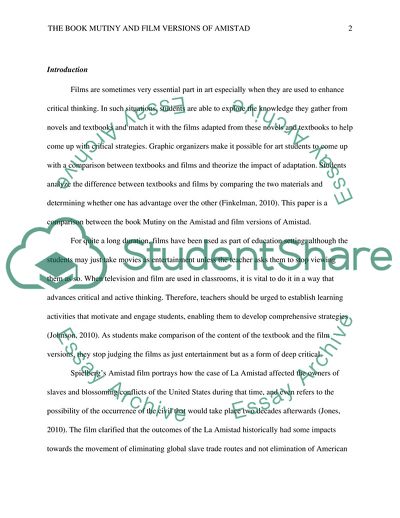Cite this document
(The Book Mutiny on the Amistad vs. Film Versions of Amistad Essay, n.d.)
The Book Mutiny on the Amistad vs. Film Versions of Amistad Essay. https://studentshare.org/visual-arts-film-studies/1832676-comparative-essay
The Book Mutiny on the Amistad vs. Film Versions of Amistad Essay. https://studentshare.org/visual-arts-film-studies/1832676-comparative-essay
(The Book Mutiny on the Amistad Vs. Film Versions of Amistad Essay)
The Book Mutiny on the Amistad Vs. Film Versions of Amistad Essay. https://studentshare.org/visual-arts-film-studies/1832676-comparative-essay.
The Book Mutiny on the Amistad Vs. Film Versions of Amistad Essay. https://studentshare.org/visual-arts-film-studies/1832676-comparative-essay.
“The Book Mutiny on the Amistad Vs. Film Versions of Amistad Essay”. https://studentshare.org/visual-arts-film-studies/1832676-comparative-essay.


